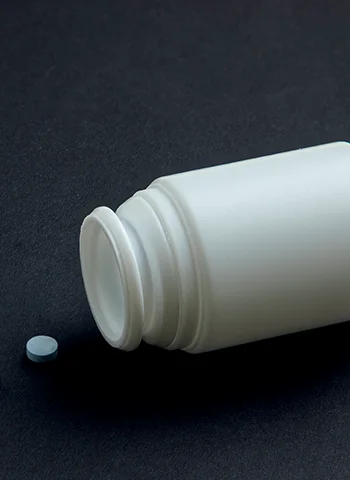The term “zombie drug” has been making waves in recent years, sparking concern and widespread alarm in the UK. Known by its chemical name xylazine, this veterinary tranquiliser is now infiltrating illicit drug markets and creating a public health crisis. Its nickname stems from the incapacitating, trance-like state it induces in users, leaving them immobilised and resembling the “walking dead.”
This article provides a comprehensive overview of the zombie drug’s origins, its devastating effects, the societal impact, and the urgent need for action. By understanding this crisis, we can begin to address its profound consequences on individuals and communities.
What Is the Zombie Drug?
The “zombie drug” refers to xylazine, a drug initially developed for veterinary purposes. Commonly used as a sedative and muscle relaxant for animals like horses, cattle, and deer, xylazine has no approved medical use for humans. Despite this, it has emerged as a dangerous additive in the illegal drug market.
The Chemical Profile of Xylazine
- Class: Alpha-2 adrenergic agonist
- Form: Typically found as a liquid but can be converted into powder for mixing with other drugs
- Legal Status in the UK: Not classified as a controlled substance under the Misuse of Drugs Act (as of now), complicating enforcement efforts
Xylazine is often mixed with opioids such as heroin, fentanyl, and methamphetamine to enhance their effects. This combination is especially deadly, as the sedative properties of xylazine amplify the respiratory depression caused by opioids.
The Rise of the Zombie Drug in the UK
Although xylazine use has been a growing concern in the United States for over a decade, its arrival in the UK marks a dangerous escalation. Originally detected in illicit drug supplies in areas such as South Wales and Greater Manchester, the drug is now spreading across the country.
Factors Contributing to Its Emergence
1. Supply Chain Dynamics
- Drug manufacturers and dealers are constantly seeking cost-effective ways to stretch their product. Xylazine, being cheap and potent, allows for higher profits.
- The drug is often sourced through veterinary channels or smuggled into the country, evading existing drug control measures.
2. Demand for Stronger Highs
- For users with high tolerances to opioids, xylazine provides a more intense and prolonged sedative effect. However, this comes with heightened risks.
3. Lack of Detection
- Unlike traditional drugs, xylazine is not routinely tested for in toxicology screenings, allowing it to infiltrate drug supplies unnoticed.
- Users often consume xylazine unknowingly, compounding its dangers.
Effects of the Zombie Drug on Users
Physical Effects
The physical toll of xylazine use is profound and harrowing. Short-term effects include:
- Intense drowsiness and sedation
- Respiratory depression
- Low blood pressure (hypotension)
- Unresponsive or semi-conscious states
Over time, chronic use leads to devastating complications:
1. Skin Ulcers and Necrosis
- Xylazine is associated with severe necrotic skin ulcers, even in areas far from the injection site. These wounds can become infected, leading to abscesses, sepsis, and in extreme cases, the need for amputation.
- The exact mechanism behind these ulcers is unclear but is thought to involve reduced blood flow and tissue damage.
2. Dependency and Withdrawal
- Users quickly develop a dependency on xylazine, experiencing withdrawal symptoms such as agitation, severe anxiety, and muscle pain when they stop using it.
- These symptoms often co-occur with opioid withdrawal, complicating treatment.
3. Mental and Emotional Effects
The drug’s impact is not limited to the body. Xylazine use contributes to severe psychological distress:
- Chronic use often leads to feelings of isolation, depression, and hopelessness.
- Many users report heightened paranoia and disorientation, making social reintegration challenging.
Broader Societal Impact
The zombie drug crisis extends beyond individual users, affecting entire communities and public institutions.
Public Health Crisis
1. Overburdened Healthcare Systems
- Hospitals and clinics are seeing an influx of patients with complications from xylazine, ranging from overdose cases to chronic wounds requiring surgical intervention.
- Xylazine-related complications often demand long-term treatment, straining already limited NHS resources.
2. Increased Mortality Rates
- Overdose deaths involving xylazine are on the rise. While naloxone can reverse opioid overdoses, it is ineffective against xylazine, leaving healthcare providers with fewer tools to save lives.
Impact on Communities’
1. Public Safety Concerns
- The presence of individuals in zombie-like states in public spaces is not only distressing but also raises concerns about crime and anti-social behaviour.
- Vulnerable users may become victims of exploitation or engage in criminal activity to sustain their addiction.
2. Economic Costs
- Beyond healthcare, the economic burden includes increased policing, emergency response efforts, and social services.
- Local businesses in affected areas often report decreased foot traffic due to safety concerns, further damaging local economies.
Government and Community Response
Addressing the zombie drug crisis requires coordinated action from multiple sectors.
Current Initiatives
1. Enhanced Monitoring and Testing
- Authorities are implementing more sophisticated drug-testing protocols to detect xylazine in seized substances and overdose cases.
- This helps map its spread and tailor responses accordingly.
2. Legislative Measures
- Policymakers are exploring the possibility of classifying xylazine as a controlled substance, which would impose stricter regulations on its sale and distribution.
3. Public Awareness Campaigns
- Educational initiatives aim to inform users and the general public about the risks associated with xylazine.
- These campaigns also highlight available support services for those struggling with addiction.
Community-Level Efforts
1. Harm Reduction Strategies
- Charities and outreach organisations are distributing wound care kits, clean syringes, and other resources to minimise harm among users.
- Safe consumption spaces are being considered to provide a controlled environment for drug use.
2. Support for Rehabilitation
- Expanding access to detox programmes and mental health services is crucial for helping users recover.
- Holistic approaches that address housing, employment, and social reintegration are proving effective in reducing relapse rates.
Recognising and Responding to Xylazine Use
Signs of Use
To identify potential xylazine use, watch for the following signs:
- Extreme lethargy or unresponsiveness
- Visible skin ulcers or infections
- Slurred speech and impaired motor function
Responding to Overdoses
If you suspect someone has overdosed:
- Call 999 immediately and provide as much information as possible about the substances involved.
- Administer naloxone if opioids are suspected. Although it won’t counteract xylazine, it can save lives by reversing the effects of opioids.
- Keep the person awake and monitor their breathing until help arrives.
Long-Term Solutions
Research and Innovation
- Further research into the effects of xylazine on humans and the development of targeted treatments is essential.
- Investments in alternative overdose-reversal drugs are urgently needed.
International Collaboration
- Sharing intelligence and best practices with other countries grappling with xylazine can help mitigate its spread.
- Strengthening border controls and international cooperation is key to disrupting supply chains.
Empowering Communities
- Building resilient communities through education, employment opportunities, and robust social safety nets can reduce the demand for dangerous drugs.
Conclusion
The zombie drug crisis in the UK is a complex and multifaceted issue, posing significant challenges for individuals, communities, and public institutions. By recognising the severity of this problem and taking decisive action, we can begin to mitigate its devastating impact.
Through education, support, and collaboration, we can create a future where fewer people fall victim to this dangerous substance. Let us work together to address the root causes of addiction and support those in need, fostering hope and resilience in the face of this growing crisis.













